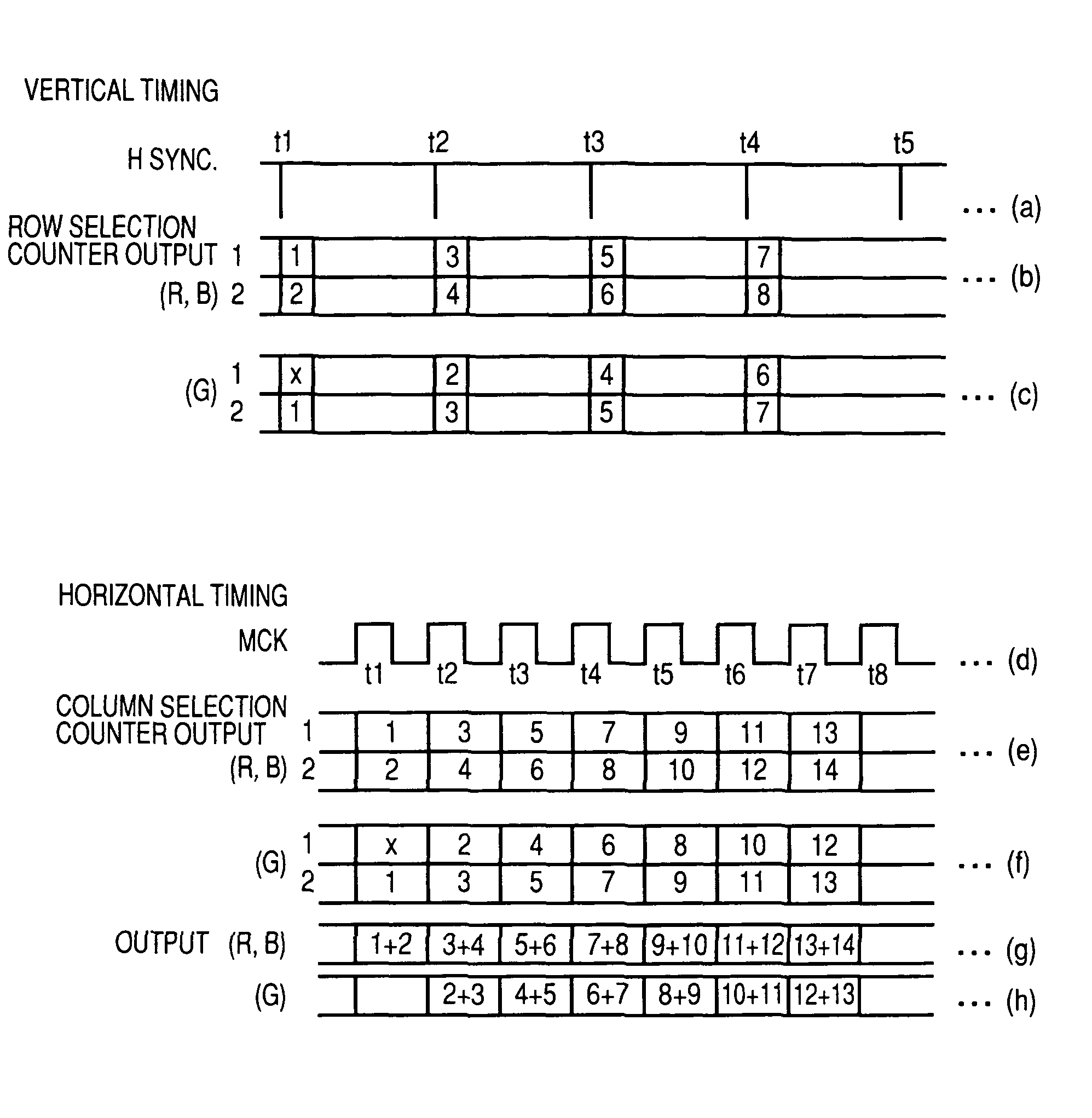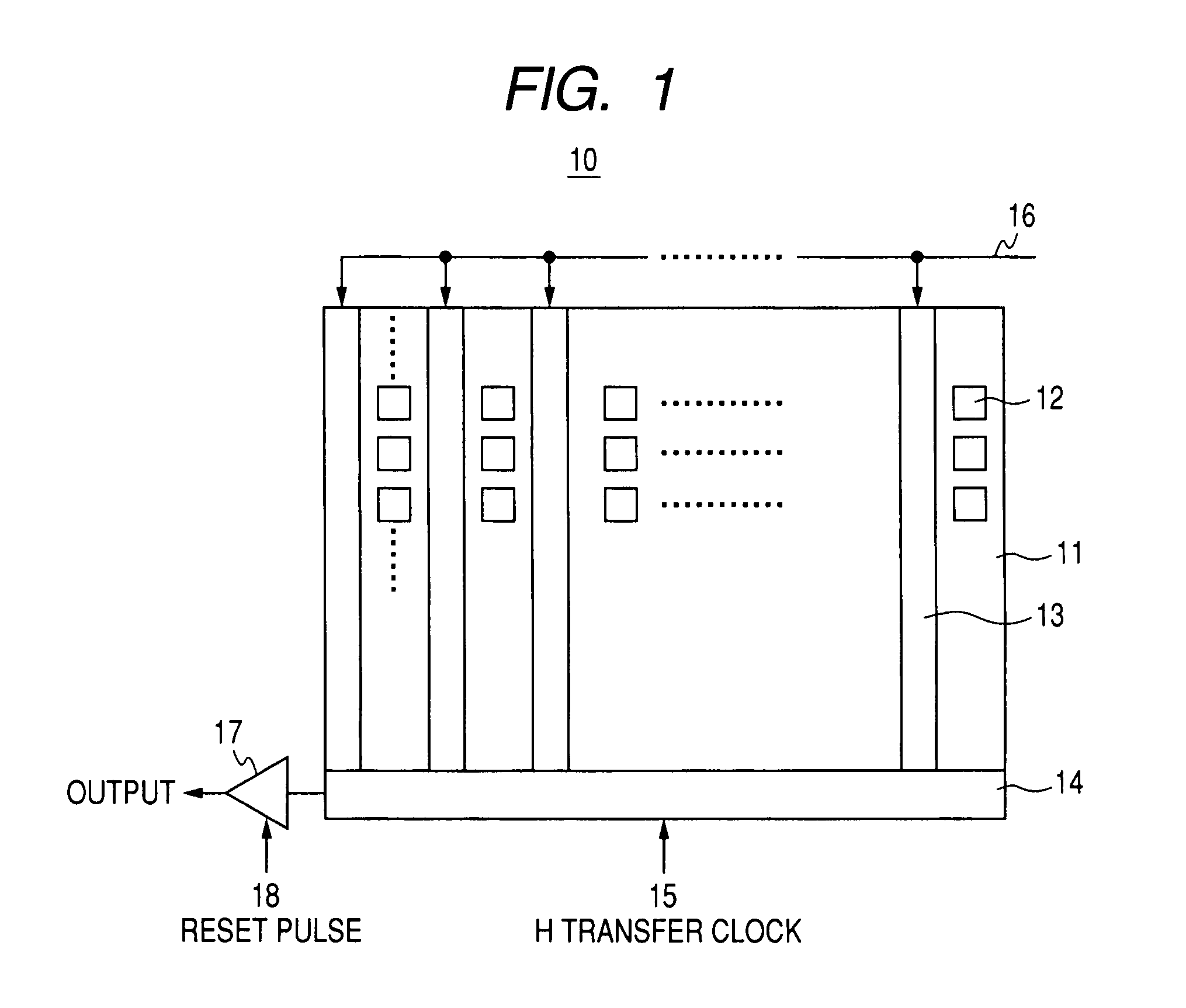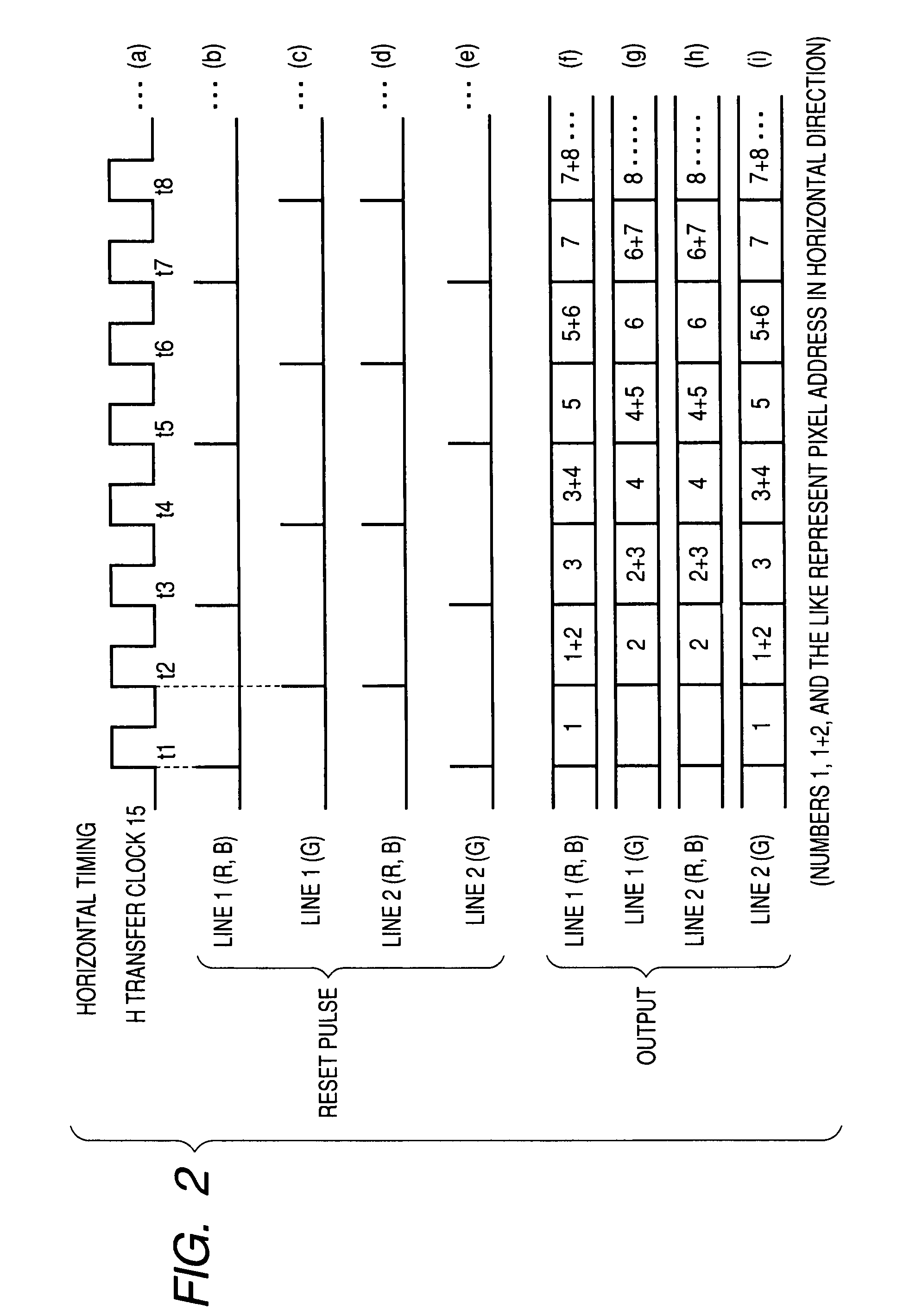Camera system for processing luminance and color signals using added pixel and adding sync signals
a color camera and luminance technology, applied in the field of high-sensitivity three-plate color camera systems, can solve the problems of deteriorating the horizontal resolution compared with the case, pixel addition process, and relatively large positional irregularities, and achieve the effect of high precision
- Summary
- Abstract
- Description
- Claims
- Application Information
AI Technical Summary
Benefits of technology
Problems solved by technology
Method used
Image
Examples
Embodiment Construction
[0035]A CCD (charge coupled device)-type imager and a CMOS (complementary metal oxide semiconductor)-type imager are known as the solid-state imaging device, and the embodiments of the invention can be applied to either types of imagers.
[0036]First, a method of controlling a camera system employing the CCD type imager (solid-state imaging device) will be described with reference to FIGS. 1 to 5. In the embodiments, a multi-plate type solid-state imaging device, for example, a three-plate type color camera system will be used as an example of the camera system.
[0037]Hereinafter, the method of controlling the CCD-type camera system according to an embodiment of the invention will be described with reference to FIGS. 1 to 5. In the three-plate type CCD camera system, the solid-state imaging device 11 is configured to have three solid-state imaging devices, that is, an R solid-state imaging device 11R, a B solid-state imaging device 11B, and a G solid-state imaging device 11G.
[0038]In F...
PUM
 Login to View More
Login to View More Abstract
Description
Claims
Application Information
 Login to View More
Login to View More - R&D
- Intellectual Property
- Life Sciences
- Materials
- Tech Scout
- Unparalleled Data Quality
- Higher Quality Content
- 60% Fewer Hallucinations
Browse by: Latest US Patents, China's latest patents, Technical Efficacy Thesaurus, Application Domain, Technology Topic, Popular Technical Reports.
© 2025 PatSnap. All rights reserved.Legal|Privacy policy|Modern Slavery Act Transparency Statement|Sitemap|About US| Contact US: help@patsnap.com



